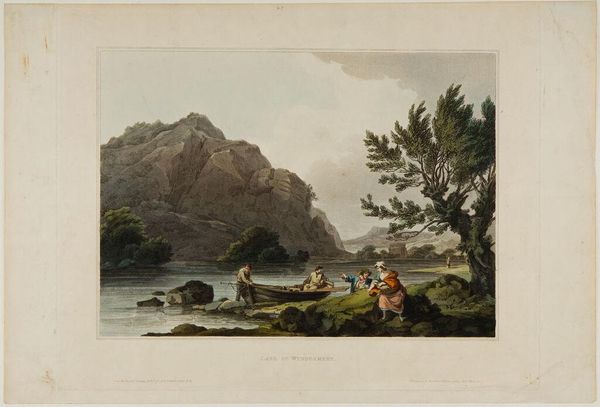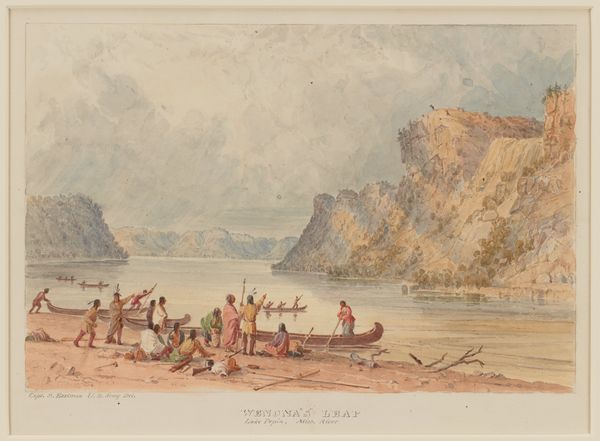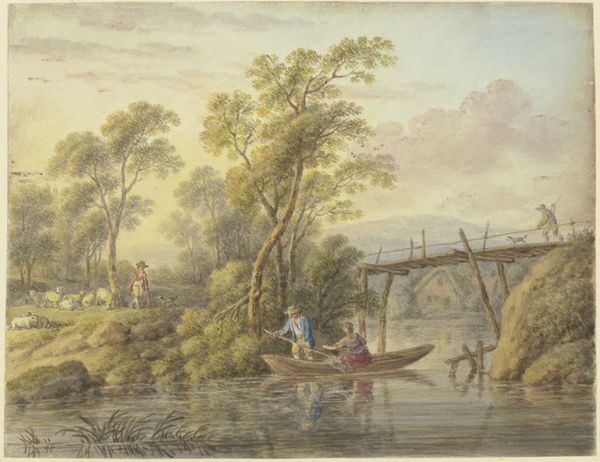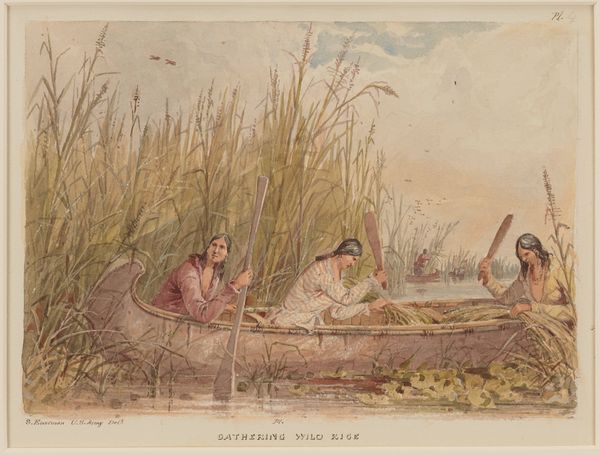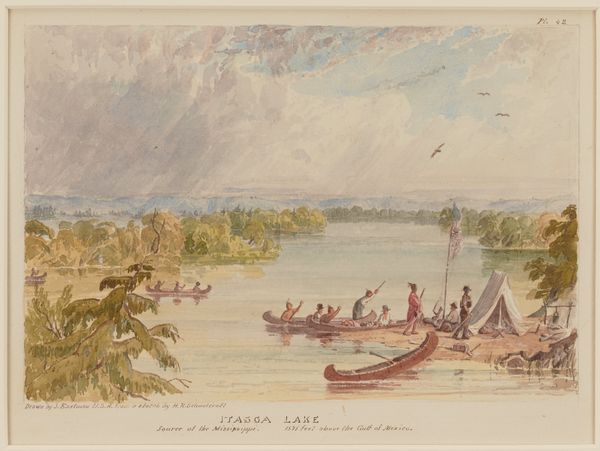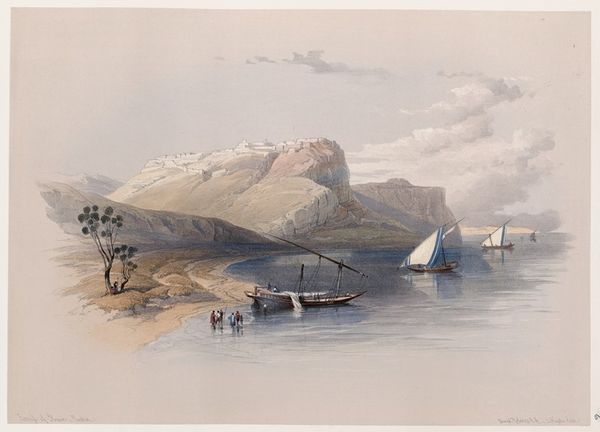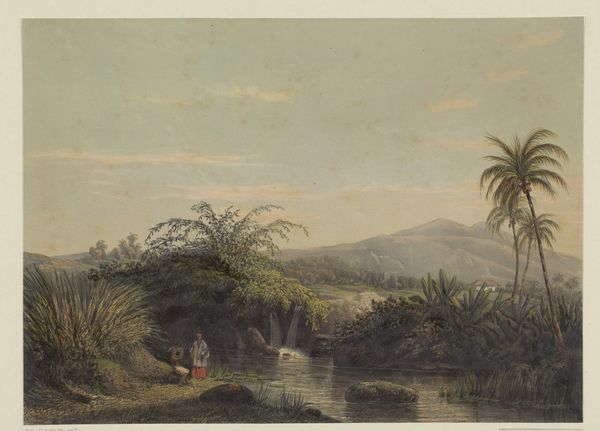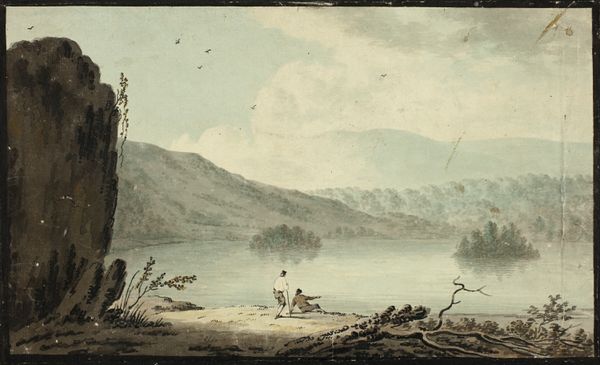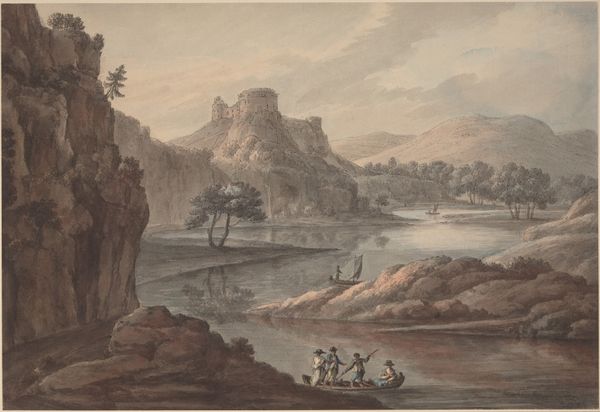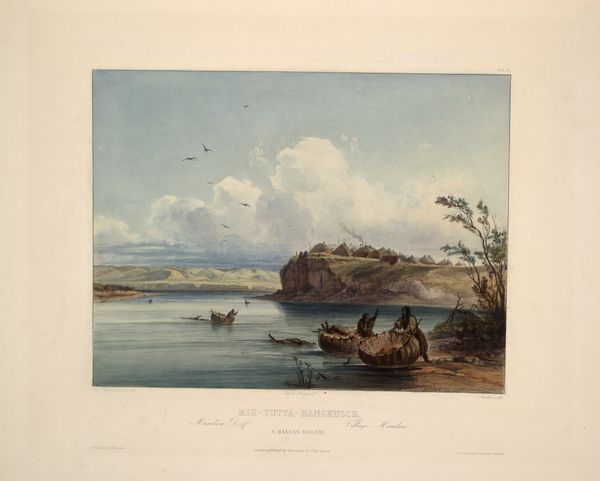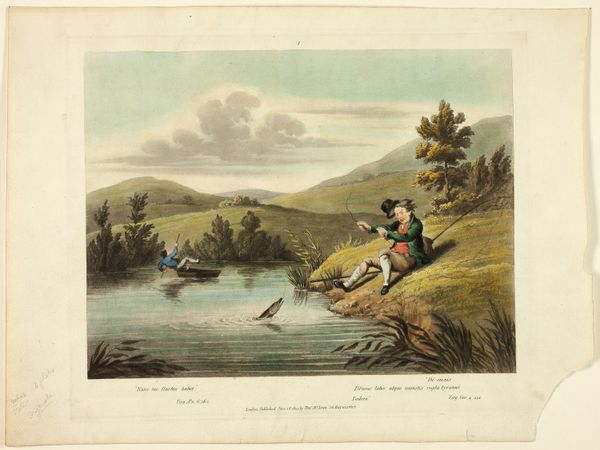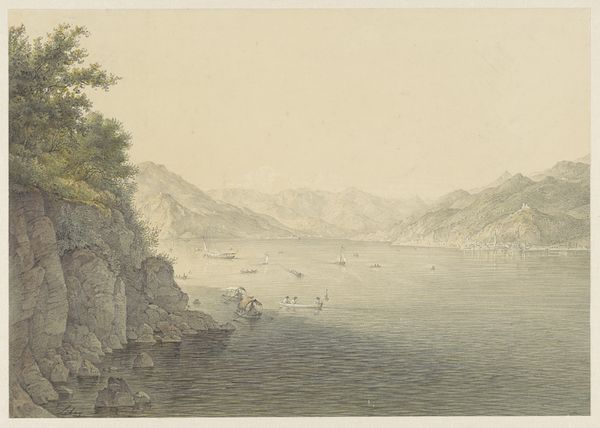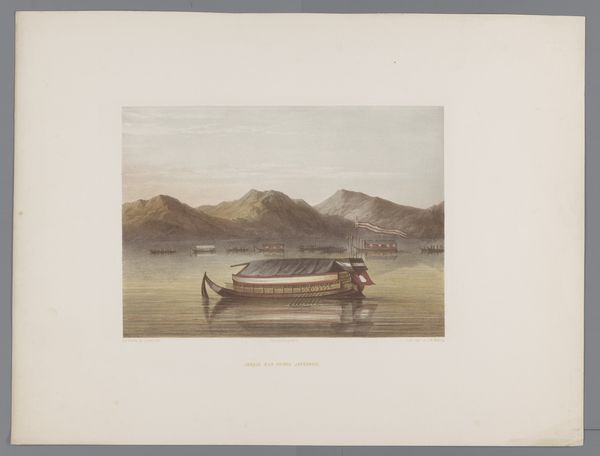
drawing, watercolor
drawing
landscape
figuration
watercolor
realism
Dimensions: 6 3/4 × 10 3/4 in. (17.1 × 27.3 cm) (image)9 7/8 × 13 in. (25.1 × 33 cm) (sheet)17 9/16 × 21 1/2 × 1 1/8 in. (44.6 × 54.6 × 2.9 cm) (outer frame)
Copyright: Public Domain
Editor: So, here we have "Spearing Fish," a watercolor drawing by Seth Eastman, dating back to 1850. It’s very tranquil... I'm struck by the serenity of the scene, but something about it feels a little…off. What do you see in this piece? Curator: That feeling of unease is worth exploring. Eastman, though depicting what appears to be a peaceful, perhaps even romanticized, scene of Indigenous life, was actually creating this work within a specific, and often oppressive, historical context. The mid-19th century was a period of intense westward expansion, and of course the rise of deeply damaging policies toward Native American tribes, which aimed to erase their identities. Editor: Right, I’m remembering the Indian Removal Act now. So Eastman's painting… Curator: Exactly, the painting functions as documentation, yet it also arguably participates in a form of cultural appropriation and potential erasure. It is important to examine who is telling the story, and for what purpose? Who benefits from this narrative? What aspects of lived experience is Eastman, as an outsider, missing? Editor: It’s like he's observing a culture while simultaneously benefiting from its displacement. Curator: Precisely. The beauty we see can mask a much more complex and troubling reality. We should ask ourselves how this image was received then, and how its reception may have changed, or should change, now. The goal is to be critically aware, and to understand how images such as this play a role in the larger narratives surrounding Indigenous peoples and their ongoing struggles for self-determination. What do you think about Eastman's representation after considering the historic context? Editor: I see the idyllic surface, but now recognize the deeper, troubling layers beneath. This makes me see it in a completely different light. Thanks! Curator: It’s essential that we interrogate these seemingly simple depictions and understand the power dynamics they represent. We must engage with difficult histories.
Comments
Seth Eastman’s original title for this image was "Indians Killing Fish." Rather than a leisurely outing, this is a hunt, which is clear from this pair’s alert poses. The distant blue water indicates the Mississippi will be calm and cooperative on this particular morning, but Eastman added a note of foreboding. The bare roots clinging to the eroding bank is a motif found in 17th-century Dutch landscapes, where it alluded to the destructive passage of time. This watercolor, one of 35 works on paper by Eastman in Mia’s collection, was the basis for an illustration in Henry Rowe Schoolcraft’s massive "Historical and Statistical Information Respecting the History, Condition, and Prospects of the Indian Tribes of the United States" (Philadelphia: Lippincott, Grambo & Co., 1851-57).
Join the conversation
Join millions of artists and users on Artera today and experience the ultimate creative platform.
